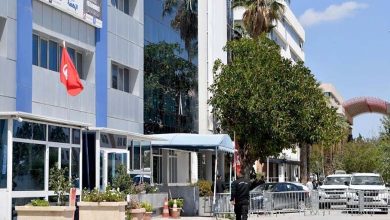Tunisian protests against the “Entry Fee” to Libya

The Tunisian-Libyan border at the Arab Maghreb intersection in Ben Guerdane witnessed a protest by citizens and traders expressing their frustration over the continued fees for the entry of cars and individuals into Libya, despite the existence of an agreement between the two sides to abolish these fees, which Tunisia has implemented, while Libya has not adhered to it.
The protesters called on the interior ministers of both countries to activate the agreement to cancel the tax decision and to treat it reciprocally, especially since the Tunisian side abolished these fees imposed since 2015. The entry fees amount to 30 Tunisian dinars for each car entering Libyan territory through the Ras Jedir crossing, and 15 dinars for each pedestrian, imposed by the Libyan authorities at the crossing. Therefore, these fees for the car increase to 45 dinars (15 US dollars) considering the driver.
Mustafa Abdelkabir, the president of the Tunisian Observatory for Human Rights, called on the Libyan authorities to return to normal and retract the unilateral measure of imposing a “fee of 45 dinars on Tunisian cars entering Libyan territory.” He pointed out, in a statement to Al-Diwan radio, that this measure has caused dissatisfaction among traders in the border region of Ben Guerdane, reminding that there is an agreement between Tunisia and Libya stating the non-imposition of any entry tax on vehicles from both sides, which Tunisia continues to abide by while Libya unexpectedly withdrew from it.
Observers suggest that working to resolve the outstanding issues is required from both sides for mutual benefit, as bilateral trade between the two countries has not ceased in recent years despite the conditions in Libya. Challenges related to infrastructure and bureaucracy hinder the growth of the trade exchanges that Tunisia seeks, which could open the gateway to African markets through Libya.
The volume of trade between Tunisia and Libya reached approximately 3.027 billion Tunisian dinars in 2022 (USD to TND exchange rate: 3.09), compared to 2.020 billion Tunisian dinars in 2021, representing a growth rate of 49.8%.
This increase in trade volume followed the exchange of visits between members of the Tunisian and Libyan governments, leading to the activation of previous agreements that had been suspended for about 12 years and the resumption of goods movement in both directions through the Ras Jedir border crossing.
At the same time, many Tunisian companies that were present in Libya resumed their activities. The escalation of trade interactions is expected to continue with the opening of the Tunis-Ras Jedir highway and the organization of upcoming trade fairs in Tripoli.
Former Tunisian Prime Minister Najla Bouden announced in November, following her meeting with the head of the Libyan interim government, Abdul Hamid Dbeibeh, that “the priorities of cooperation in the coming period include enhancing trade exchange, facilitating the flow of goods and the movement of passengers between the two countries, simplifying procedures at border crossings, and enhancing cooperation in the areas of food and energy security, economic, financial, and investment cooperation.”
Bouden also discussed diagnosing objective issues and seeking solutions to overcome them, including unifying customs procedures and completing the idea of a joint industrial zone in the Ras Jedir area, announcing that all restrictions on the movement of goods between the two countries have been canceled.
In recent years, Tunisia has sought to strengthen its position in the Libyan market to regain its lost status following the uprisings in both countries in 2011, which negatively impacted the trade balance and export volumes. Tunisian exports to Libya have diversified, including phosphates and their derivatives, agricultural and food products, textiles, clothing, leather, and mechanical and electrical industries.
Regarding imports from Libya, they have also increased by 34% in 2022 compared to 20.8% in 2021, thanks to the recorded increase in the sectors of energy materials, raw and semi-manufactured materials, consumer goods, and processing materials.












